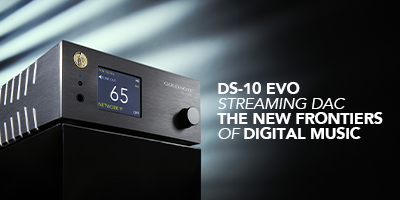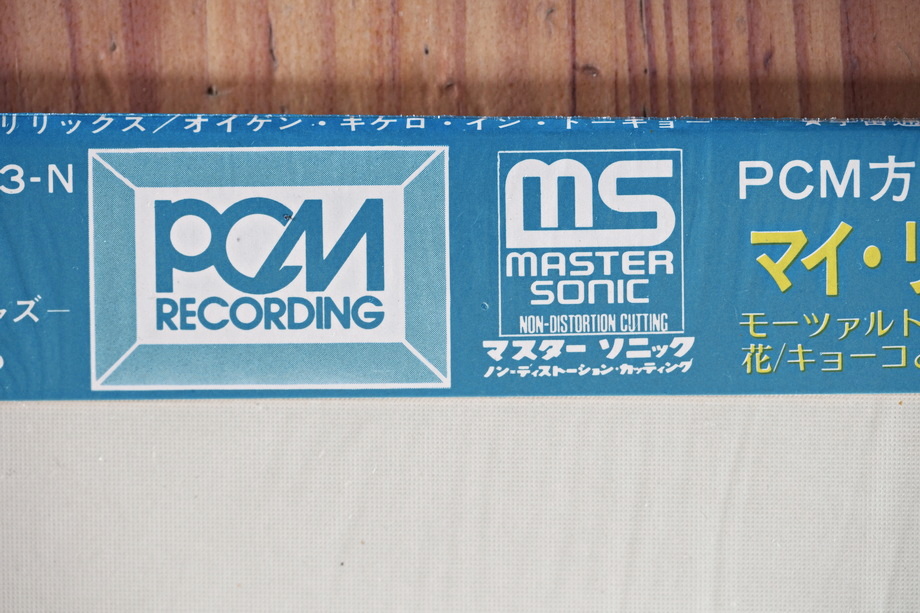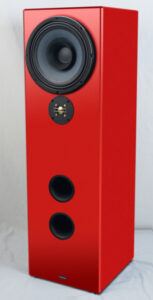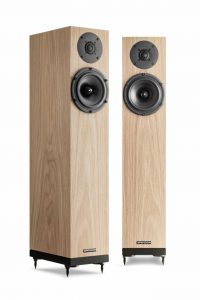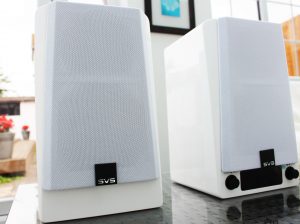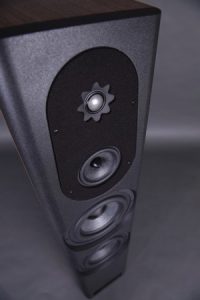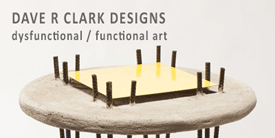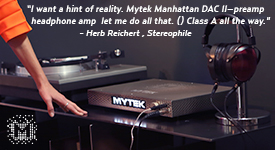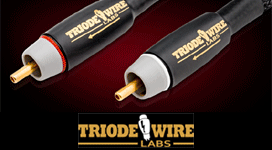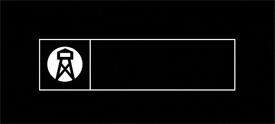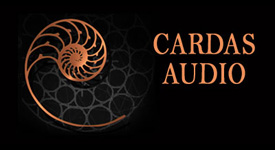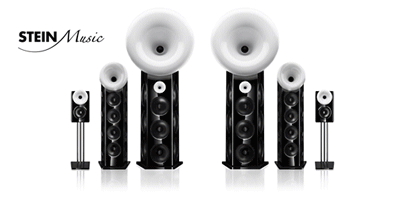Harbeth Audio Ltd. is a British company founded in 1977 by former BBC research chief Dudley Harwood. Its name is derived from 'HARwood' and his wife's first name 'elizaBETH'. In the early 1970s, when Dudley was employed by the BBC, he designed a near-field monitor that could be used in mobile broadcast studios. In 1986, the company was bought by Alan Shaw, who still heads it today. We are testing the largest loudspeaker in this manufacturer's range, in its latest version, the M40.5 XD2.
HOW DO YOU WRITE ABOUT LEGENDS?
By kneeling down, acknowledging and glorifying their role in one field or another? By writing hagiographies and thus trying to plug into their cult, trying to redirect some of the sacred radiance shining down on the chosen/chosen one to themselves? Or perhaps to do exactly the opposite and, like Tadeusz Boy-Zeleński, "de-freeze" the figures frozen in monumental pose and thus bring them back to life, they could again participate in, enriching it with their presence? Is it even possible to talk about legends in a meaningful way, so as not to fall into banality or hysteria?
A rhetorical question, you might say, after all, there are plenty of examples of reliable, good monographs, biographies, columns and essays in which the balance has been maintained, while at the same time the most important thing—the reasons for "elevation to the altars"—has not been lost sight of. But it's also the case that when you live with such a legend, when its shadow is in your sight, you can't just disregard it. And because its constant presence allows you to control a large part of the subconscious emotions that might otherwise blow the story apart, you reach a place where the balance in question becomes natural.
However, this will no longer be the dry and distanced judgment of a researcher, but a common-sense and yet engaged "co-presence" of someone who knows this monument not only from the front, but has seen it from every other side. He has even looked under the pedestal. He knows that it is just an empty shell, something imagined, referring to many other clues. This awareness, however, is mixed with shyness and a sense of dealing with something special. I am an example of it, and the legend in question is the Harbeth speakers, model M40.1.
I tested the M40.1 speakers marked Domestic —there was also an active version available—in October 2011, and since then they have been my reference speakers, that never disappointed; test HERE.
By BBC
Harbeth is a member of a group of manufacturers, who are usually referred to as "BBC" school. These are companies whose founders previously had some contact with the research department of this esteemed British broadcasting corporation. In addition to Harbeth, these would be: Falcon Acoustics (1972), Graham Audio (1968) or Rogers Audio (1947), and most notably Spendor (1969); a particular exception would be KEF (1961), founded by a BBC engineer, which over time developed completely different technologies.
I point your attention to the latter because it was its founder, Spencer Hughes, working at the time—that is, in 1969—as a BBC laboratory technician, who designed and manufactured one of the first practical plastic woofer diaphragms. Together with the soft-dome tweeter he invented, it became the basis of the BC1 speakers, the prototype of all later monitors of this type. And the plastic diaphragm became their cornerstone.
We read...
The heart of today’s Harbeth sound is our unique, Patented, RADIAL™ cone material. It has an interesting legacy. On 19 March 1976, our founder, H.D. Harwood of the BBC Research Department, filed a Patent application (1563511) claiming that polypropylene could be used a loudspeaker cone material, now the cone material is throughout the global audio industry.
The Harbeth company was formed to commercialize his invention and to sell his knowledge as monitor speakers back to the BBC. However, in 1994/5, a superior material was presented to Harwood and analysis of its improved properties led Harwood to abandon polypropylene and adopt the new TPX material in the forthcoming HL Monitor Mk4, and later in my (A.S) original Compact and HL5.
Alan Shaw, Harbeth's history in speaker cone research, Harbeth.co.uk https://harbeth.co.uk/harbeths-history-in-speaker-cone-research </a>, accessed: 17.03.2025.
This was innovative technology for the time, although it should be remembered that Harbeth was not the first manufacturer of this type of speaker. Recall that as early as 1962 KEF presented the K1 Slimline loudspeakers, which used drivers with diaphragms made of polystyrene and melinex. In the case of Harbeth, his idea was quite quickly duplicated, in different versions, by other manufacturers.
A related anecdote says that the reason for this was Dudley Harwood's mistake, which almost led to the company's demise. Harbeth's founder, while filling out a patent questionnaire, made a mistake in one of the tables, causing the protection for the material he developed to expire extremely quickly. This allowed it to be used by other speaker companies for free.
In 1990, concerned about the inadequate supply of purchased membranes, the company won a research grant from the British government's Science & Engineering Research Council (SERC). The project allowed it, it reads, to "thoroughly investigate alternative material solutions." As a result of this research, the company patented a plastic material called RADIAL (Research and Development In Advanced Loudspeakers). As Harbeth declares, "RADIAL is still unrivaled in terms of clarity and sound resolution."
Thus, we have one of the primary distinguishing features of Harbeth speakers—the diaphragm of the woofer or midrange driver. The second is the cabinet. When we look at the modern world of loudspeakers we will probably notice a clear division between manufacturers using wood, in the form of MDF, HDF, plywood or even solid material, and those who have opted for materials with much lower vibration susceptibility. Like Wilson Audio or Tidal, using resin-based compounds, or Magico and YG Acoustics, which build their loudspeakers exclusively using aluminum.
The idea for the speakers presented by the BBC in the 1960s was quite different. Instead of damping vibrations, they were made to take advantage of those. Thus, the cabinets of speakers of this type feature thin walls damped only in selected places and bolted in such a way that they resonate in certain frequency ranges. This is the case in both small models, such as the LS3/5a, and the largest models, including the tested M40.5 XD2. This idea was patented by the BBC, but today it can be used, I believe, without having to pay using it. An extreme example of this idea was the speakers of the Austrian company Bösendorfer, which called the vibrating panels "horn resonator."
Although it looks like a DIY-type invention, it is the result of complex research and analysis by the best designers of the time. And that's because the speakers of all the brands mentioned were conceived as monitors for production and recording studios. They were meant to be tools. They were divided into three groups, for close-field listening, like the LS3/5A, semi-close and far-field listening, like the original BC1, and were to stand either on mixing tables or right behind them, on stands. That's why even the largest of them are, nominally, monitors, or stand speakers.
Monitor 40
The tested speakers are another, already fifth incarnation of the model introduced in 1998—the Monitor 40, or M40 for short. It was the direct successor to the two-way LS5/8, back then the BBC's top design. The LS5/8 was a two-way monitor, while the larger M40 was designed for three-way operation.
The original M40s featured a Norwegian SEAS tweeter modified for Harbeth, a RADIAL midrange driver and a 300mm Vifa woofer—SEAS domes are still used today. In 2006, Vifa stopped producing drivers for Harbeth, so the Brits had to develop their own, also with a polypropylene diaphragm. And it was these drivers that found their way into all later versions of the M40.
As well as the RADIAL 2; a revised version of the company's most important patent, which, along with a coil of higher impedance than before and with a more powerful drive system, yielded a midrange driver that was first used in the M40.1 and survived all the way to the M40.5 XD2, which uses its newer RADIAL 4 version.
The original M40 was sold until 2007, and was replaced in 2008 by the M40.1, produced until 2017. Subsequent versions were the M40.2 on September 24, 2015 (we wrote about it HERE) and the M40.2 40th Anniversary Edition. In 2017, the company celebrated its 40th anniversary. Their celebration was honored with a special version of the M40.2 speakers. The latter brought a significant change, as far as I'm concerned - the company reached for real high-end speaker terminals from WBT.
The fifth generation of the Monitor 40, dubbed the M40.3 XD, in 2022, was to consummate the changes found in the "anniversary" version, primarily crossover tweaks and changes to the cabinet ribbing. Indeed, the XD in their symbol was abbreviation for eXtended Definition. The M40.5 XD2, launched in March 2025, are therefore the fifth generation of these speakers. We are testing them as the first in the world.
M40.5 XD2
Here's what Harbeth has to say about their latest speakers:
The M40.5 XD builds on the success of the globally acclaimed M40.3 XD, delivering a remarkable leap in performance. With breathtaking realism, deep bass, and exceptional transparency, these loudspeakers offer an unparalleled listening experience—even for the most discerning ears.
Precise throughout the audio spectrum, emotionally captivating, and effortlessly driven, the M40.5 XD2 elevates the renowned Harbeth sound to new heights.
Monitor 40.5 XD2, Harbeth.co.uk, accessed: 18.03.2025.
Like every manufacturer, also this one emphasizes the advantages of the new version. The thing worthy of note about manufacturers of this class and with such experience as Harbeth, however, is something we would call creative continuity. The speakers in the Monitor 40 line, starting with the M40.1 and ending with the M40.5 XD2, look almost identical, sharing characteristic features. They are three-way, powerful speakers in vented, bass-reflex cabinets, designed to be placed on not-so-high stands, measuring 750 x 432 x 388 mm (+12 mm for grille and terminals).
The measurements of all versions are also quite similar. Frequency response is said to be 35-20,000Hz and is expected to be even off-axis as well. The weight of the speakers has changed slightly over the years, increasing from 30 to 34 kilograms. Thirty or thirty-four kilos is not much for such large designs, but this restraint is a direct result of the design intent.
One of the guidelines that the BBC at one time set before its researchers was to prepare speakers that would be easy to reposition or rearrange. After all, let's remember that we're talking about studio monitors, meant to work also in mobile studios, built next to concert halls. It was also important for the cabinets to give off energy as quickly as possible and not to accumulate it. That's why Wilson Audio or YG Acoustics, to stay with the obvious representatives of each type of enclosure, invest so much time and money in researching cabinet materials and design. And they still find something that can be improved in them.
Comparing the first two versions of the Monitor 40 with subsequent ones we only find differences when it comes to efficiency. Starting with the M40.2, it has been improved and instead of 84 dB it is 86 dB, and the impedance from, respectively, 6 ohms is now supposed to be in the 6-8 ohm range, and the speakers are, quote, supposed to be "easy to drive." That's why the minimum amplifier power is already specified at 35 watts, and the top power at as much as 650 (remember—again—we're talking about studio monitors). The M40.1 is easy to drive, I've listened to it with a number of 6 and 8 watt amplifiers based on 300B tubes, but these beasts feel much more comfortable driven with fifty watts or more.
In press materials the company sent out last month to celebrate the launch of the M40.5 XD2, Alan Shaw said that "the XD2 models are the most transparent Harbeths ever produced." As you can infer from the XD2 acronym, we're dealing with a new crossover, intended to be even more transparent than the older version. The manufacturer's website reads:
Each speaker in the XD2 series incorporates a newly refined crossover design. The result is a speaker that excels in tonal accuracy and is more open and clear, immersing listeners in a more lifelike musical experience.
Also new here is the midrange driver. Maybe not completely new, because it's still a driver with a diaphragm of the plastic variety, but now in the RADIAL 4 version. It is, as the manufacturer assures, the axis of change in this design, around which all other improvements move. Harbeth's new series of loudspeakers are based on a revised material formulation and an improved injection molding process, so they are supposed to be, I go back to the press materials again, "even more transparent and honest to the source."
And while externally the Monitor 40 didn't actually change, even if we consider that several new veneers were offered with the "anniversary" version, internally each of its incarnations was modified. Not much, but still. It was all about the damping method and "additional tuning" and "adding more rigidity to the cabinet," as well as adjustments to the crossover and midrange driver material. This was supposed to result in a "stronger and deeper bass without changing the tonal balance Harbeth is so respected for."
And since we mentioned veneers, let's just say that the tested speakers are available in five versions: black ash (satin), cherry, walnut, oak, rosewood. The manufacturer assures that these are "the finest, highest quality veneers" and that "each premium veneer is carefully sourced and meticulously tested." And indeed, the speakers look superb and stand the test of time very well. Mine are now fourteen years old, and although a bit faded from the sun—this applies to the left speaker, placed by the window—the veneer is still smooth and nice.
SOUND
HOW WE LISTENED
The Harbeth M40.5 XD2 loudspeakers stood in exactly the same place where the M40.1 loudspeakers had stood since the beginning, that is, since 2011, in the semi-close field. This means that they stood at a distance of 252 cm from the listening position and 232 cm from each other (counting from the center of the front wall). They were 56 cm from the rear wall, counting from the center of their back wall. During the test, the speakers were toed-in so that the axes of the drivers crossed exactly on my head.
Harbeths—and Spendors, for that matter—have developed quite a group of manufacturers specializing in making stands for them. For years they were sold with simple, lightweight metal products from Skyline, and they played really well with those. That has changed, however, and now they are usually presented with German, excellent wooden TonTräger Audio, and in Poland also heavy metal ones from Rogoz Audio.
In my case, it looks different. After using the MDF stands, the M40.1 ultimately were placed on custom-made Acoustic Revive Custom Series Loudspeaker Stands, designed for me by Mr. Ken Ishiguro; they cost as much as the speakers themselves at the time. The tweeter was at a height of 109 cm from the floor. Sitting on the couch in front of the speakers, my ears are between the midrange and tweeter.
These are speakers sensitive to their environment, so once I heard the first speaker filters from SPEC called Real-Sound Processor, they remained permanently in this configuration: first the RSP-101 HERE, then the RSP-901EX HERE and finally the RSP-AZ9EX HERE. A test of this company's latest system, consisting of the RSP-W1EX and RSP-AZ9EX filters in the RSP-W1-CEX enclosure, will be published in May. Real-Sound Processor is one of the best ways to improve the sound of this type of speakers.
Years later, I decided to use other anti-vibration feet under the stands. I chose Pro Audio Bono PAB ceramic 60 SN' feet for this role, test HERE.
I determined the distance between the speakers and their leveling using a Bosch PLR 50 C. For more on positioning the speakers, see the article "Fine-Tuning," or how to set up speakers, High Fidelity № 177, January 1, 2019, highfidelity.pl HERE, accessed May 10, 2022. For more on HF listening room acoustics, see the article Room acoustics and how it works according to Mariusz Zielmachowicz, High Fidelity № 189, January 1, 2020, highfidelity.pl HERE, accessed 12.07.2022.
The tested speakers were driven with Soulution 710 power amplifier, and the signal was sent using SiltechTriple Crown speaker cables. My reference speakers for this test were Harbeth M40.1 and YG Acoustics Vantage 3. As a source of music I used my Ayon Audio CD-35 HF SACD Player. I spent more time than usual with these speakers, but they were a special case.
RECORDINGS USED FOR THE TEST a selection
Patricia Barber Companion, Premonition Records/Mobile Fidelity Sound Lab, UDSACD 2023, SACD/CD 1999/2003; more HERE.
The Oscar Peterson Trio, We Get Request, Verve/Lasting Impression Music LIM K2HD 032, K2HD Mastering, "24 Gold Direct-from-Master Edition UDM", Master CD-R 1964/2009.
Mark Hollis, Mark Hollis, Polydor 537 688-2, CD 1988, more HERE.
Dead Can Dance, Into The Labyrinth, 4AD/Warner Music Japan WPCB-10076, Audiophile Edition, SACD/CD 1993/2008.
Chet Baker, Baker’s Holiday, Verve Records B0003279-16/SUHD 009960, Test Press SACD 1965/2004.
The Police, Reggatta De Blanc, A&M Records 493 705-2/SUSS 004390, Test Press SACD 1979/2003.
Mayo Nakano Piano Trio, Miwaku, Briphonic BRPN-7007GL, Extreme Hard Glass CD-R 2017, more HERE.
Lars Danielsson & Leszek Mozdzer, Pasodoble, ACT Music ACT 9458-2, CD 2007, reviewed HERE.
Dominic Miller & Neil Stacey, New Dawn, Naim naimcd066, CD 2002.
Vangelis, Blade Runner, soundtrack, dir. Ridley Scott, Atlantic Records/Audio Fidelity AFZ 154, "Limited Numbered Edition No. 2398", SACD/CD 1982/2013.
Judy Garland, Changing My Tune (Audiophile Edition), Phonogram Recordings/Tidal, FLAC 16/44,1 2025.
Viagra Boys, Uno II, Shrimptech Enterprises/Tidal, FLAC 24/48 2025.
Emil Brandqvist Trio Endless Like a Sea, Skip Records/Tidal, SP, FLAC 24/96 2025
First bares from Frank Sinatra's Nice'N'Easy and I thought: but what's all the fuss about? For both pairs of speakers sounded extremely similar. It was a deep sound with a remarkably resolving midrange and the dark mid-high range that so appeals to me and that seems to be "the" right one. That is, incredibly resolving and, at first glance, not very detailed. The latter is an error of perspective, due to exposure to other speakers. But an error so "tame" that it is overlooked by most listeners.
In a well put together system, however, such a picture of a studio situation, concert situation or music constructed entirely in the studio, becomes natural. And that's exactly what I heard with the new M40.5 XD2 speakers. After all the previous versions, which slightly deviated from this "pattern," either by a more lit up treble or by a less-loaded bass, the Harbeth M40 A.D. 2025 return to its roots—at least that's how I see it.
So let me return to the question I asked myself at the beginning. If this were simply a mimicry, an attempt to recall something from the past, it wouldn't make much sense. After all, it would mean that all the corrections and minor changes that were applied in subsequent versions of this monitor had no meaning or value, they were just a "cash heist," right? But exactly this question was answered by Sinatra himself, right after my first exclamation: "I know that!", brought out as soon as I switched from older Monitors to newer ones.
Although I knew this right away, the longer I listened to Harbeth's new speakers, the better I understood—or so I thought—what was going on here. While maintaining the overall tonal balance, scale, stereoscopy, etc., we get even better resolution with them, but also a lit up upper midrange. Not brighter at all, the tonal balance seems quite similar, especially when you compare it to other speakers. But, the way I see it, more resolving.
Sinatra's voice heard through the M40.5 XD2 still had the same seductive charm and silky finish, but now phrasing was more clearly shown, word endings were more accurately accented, an absolute priority thing for this artist for whom diction was as important as tonality. The strings in the You Go To My Head were shown in a better defined space. Seemingly, they could still be heard in a slightly "separate" way than the brass section, but now the acoustics of the room they were sharing, were more uniform, better "encompassing" the entire performance.
In general, the presentation is clearer. As I say, not by brightening the part of the band responsible for clarity. Here the thing is, to repeat, a higher resolution. This is not a "ground-breaking" change, not like "day and night" or something like that, it would be strange. However, the difference is significant and changes the way music is perceived. For there seems to be more sound, especially at the top of the band.
The percussion instruments in the Black Magic Woman, a cover of Santana's song included on Patricia Barber's album Companion, were therefore more accurate, there was more subtlety in the timbres, in the almost visible way the percussionist moves the maracas, drags his fingers over the bells, and so on.
By the greater intensity of the treble, resulting from the number of events at the same time in the same place, it seems that the instruments in this range are closer to us. The M40.1 projected them farther into the scene, more firmly sunk into the acoustics, which darken with distance from the microphones. With the new version of these speakers, they are illuminated much farther away, darkening the reverberations that have been placed on them, but they themselves sound clear and clean.
At the same time, vocals seem to be localized farther away from us than before. One of the peculiarities of "my" speakers was the palpability of voices recorded with closely positioned microphones. Sounds with saturated low mids were almost at arm's length—and this is not a figurative statement, but a fact. This was the case with the voices of Sinatra and Barber, and I similarly perceived a change in the presentation of Mark Hollis' voice. It was in his powerful voice in The Gift, however, that I recognized something with the tested Harbeths that had previously escaped me somewhat, covered up by other details, namely clarity.
The new version of the speakers forms the leading edge in a faster way, and thus cleaner. I don't know yet if it's certainly and one hundred percent better. But it's certainly more neutral and more precise, closer to reality in describing what really happened in front of the microphones. For with higher resolution comes also a more strongly accented "presence" of the instruments. In the sense that they seem clearer. Seemingly they have a similar color, seemingly they are shown in the same—more or less—place, and yet they are "more."
And this is true regardless of what instruments we're talking about, although it was best heard with acoustic recordings. For example, We Get Request by Oscar Peterson Trio. The pianist's tug on the piano strings, opening Corcovado (Quiet Night Of Quiet Stars) was shown with the Harbeth M40.5 XD2 more clearly and with more precisely defined acoustics. Because these are, ultimately, clearer speakers than the M40.1 and more precise monitors. But still remaining in the same idiom when it comes to the way they build sound. It's impossible to confuse them with any other designs.
Also because of how the bass is shown by them. In the new "M" there is no denying it is deeper and more accurate. But also less tangible, not as "gutsy," sensed deep in the body. One of the hallmarks of the versions of the Harbeths I use is a slight boost in the bandwidth around 60 Hz. In subsequent incarnations of this design this has been leveled out—in my opinion to the benefit of precision, but to the detriment of music. Here I hear no boost, yet the bass is deep and resonant.
And not only with jazz, but also with electronic-acoustic music, such as that of the Dead Can Dance duo. Better definition, deeper bass and more sounds on top of the band resulted in a richer presentation, there was more of everything in it. Again, these were not revolutionary changes, but rather evolutionary. But not "creeping" either, but more of a leap. Especially when it came to the breakthrough of the bass and midrange. It was here that the clarification of the sound brought the biggest change, besides, of course, the higher resolution of the top end.
All this makes the music listened to via the M40.5 XD2 exciting, sensual, dense, expressive, and also energetic—and very much so! These are still some of the best speakers in the world for medium-sized and quite small rooms (that's a paradox—Harbeth's M-series speakers will play superb even in small rooms). Except that they show the world from a slightly different angle than my M40.1. They are closer to YG Acoustics speakers than before. They are not the same, we don't need two brands that are the same. But still. That is, tonal-wise they are closer to the contemporary trend of high-end designs than to the classic "à la BBC" speakers. In terms of musicality, energy and dynamics, on the other hand, they are an extension of the latter.
Starting the test, I pulled all the best music library has to offer: master CD-Rs, test press CDs and SACDs, unit copies, DSD256 and Master Studio DXD files, and of course I reached for First Impression Music's "24 Gold Direct-from-Master Edition UDM" discs, as well as, of course, Briphonic's Extreme Hard Glass CD-Rs. I wanted to immerse myself in the sound, to observe everything thoroughly, based on the memory into which these top releases and realizations had been already "burned-in."
Based on this experience, I can say without a shadow of a doubt that these are full-range, powerful speakers, reproducing really low bass. Listened to the albums Pasodoble by Lars Danielsson & Leszek Mozdzer, New Dawn by Dominic Miller and Neil Stacey and finally Blade Runner by Vangelis easily demonstrated this feature. But the real test came, at least for me, when I started listening to recordings from the 1920s, 1930s and 1940s. It was amazing how well they were reproduced. Judy Garland from the Changing My Tune compilation described in as Audiophile Edition had dense, dark yet silky vocals, and the overall volume was excellent.
Because the Harbeths generate large phantom images, they saturate the room with sound. Even with recordings that at their outset have intentional distortion intended to show the punk attitude of the musicians, as exemplified by the excellent Uno II by a band with the graceful name Viagra Boys. Not surprisingly, such excellent recordings as those from the Emil Brandqvist Trio single Endless Like a Sea, from the album entitled Poems for Travelers, scheduled for April 4, were excellent in presence, tonal balance, dynamics, micro-variations and differentiation.
It was a bit disappointing to hear Suzanne Vega's new single Speaker's Corner, but that's because this recording is extremely lacking in saturation, almost jazzy. And I would see the biggest difference between them and the M40.1 in how these speakers treat not-that-good, technically, recordings. "My" Harbeths are more forgiving, even though, after all, they show just as much, or not that much less. The higher resolution of the M40.5 XD2, combined with better selectivity, cause these speakers to present the upper midrange more clearly, and thus push problems in this range slightly forward.
The second significant difference lies in the way they energize the room with dense sound. The older model does this totally, that is, it saturates all the air, surrounds us with pressure. The newer one goes in the direction of greater openness and creating rearrangement deeper in the stage. Which reminded me of other excellent loudspeakers, though after all completely different in idea and design, namely the YG Acoustics Vantage 3 and yet another Avatar Audio Holophony No. 2 V. This shows how close together good sound ideas are.
Summary
It's simple, the Harbeth M40.5 XD2 are objectively the best speakers from this company in its forty-odd year history. They are also some of the best speakers designed for medium-sized rooms that I know of. At the same time, they are priced more than modestly—for a comparable product by a different brand you would have to pay two or even three times as much for a sound of this class. But this is a typical thing for this English manufacturer, something like a "stamp."
These are full-range speakers with amazing dynamics and wonderful resolution. Their tonality is amazingly consistent and set quite low. They also create a three-dimensional surround image with great stage depth. They differ from the M40.1 in several important aspects. They are less forgiving, and their tonal balance is set higher. "The peak" in the bass range is evened out here, and the upper midrange is not withdrawn. These are thoroughbred studio monitors, but they have nothing in common with the mechanical sound of most such designs. They are full of passion and energy.
So why don't I run to the ATM to withdraw money and replace my M40.1s? Maybe because I've gotten used to them. Or maybe because I would have to change the amplifier as well - the M40.5 XD2s would play better with a tube amplifier, not necessarily a high-power one, but necessarily a top one. Such a Kondo Ongaku would be an ideal partner. But it would mean a complete system change for me, which for a reviewer is an event equal to an earthquake. And I'm not ready for that. Well, and I love my M40.1.
Putting subjective considerations aside, however, I'm happy to say that the latest version of the Monitor 40 speakers is excellent. Beautifully vintage in execution and appearance, but surprisingly modern in performance. Or is it that other companies have realized what's most important in sound and have begun to refer to what the BBC knew back in the 1960s? Maybe both. Therefore, from us, wholeheartedly, GOLD FINGERPRINT, our highest award for products from the very top.
DESIGN
In 1998 the Monitor 40, Harbeth's new reference loudspeaker model, was unveiled. It proved to be its largest and most ambitious design ever. It was intended both for recording studios—in an active version - and for home audio systems. All of the assumptions that led to its creation, based on Dudley Harwood's BBC-born experience, filtered through Alan Shaw's more than a decade of experience as the company's owner and head of design, remain in force today and are evident in the fifth generation of these speakers, the M40.5 XD2 model.
These are large bookshelf speakers, whose name Monitor refers to function, i.e. studio listening monitors, rather than form, i.e. small bookshelf speakers. The speakers are a three-way, three-driver design in a vented, bass-reflex cabinet. The ports for this system are located at the front of the cabinet, between the woofer and midrange drivers. They are still, as in 1998, plastic extrusions without contoured inlets.
The cabinets are made of not too thick MDF panels, which visibly vibrate with the music played. They are veneered on both sides—an important element, giving much better control over the operation of the panels. The box is assembled differently than in the vast majority of products made of wood and its derivatives. This is because it is glued together with only four walls all around, and the front and back walls are bolted to them, with fourteen screws for each. These screws are tightened very gently, almost no pressure is applied to the baffles, as the latter are held in place with a sticky material. Inside, the walls are ribbed in some places, and it is the choice of points that the designers wanted to strengthen that differentiates the successive versions from each other.
Damping is provided by flat sheets of acoustic foam of varying density. In the M40.1 this was augmented by rolled rolls of wool. The woofer and midrange drivers are screwed from the inside, and only the tweeter from the outside. As a reminder, that's a 25mm SEAS (Scandinavian Electro Acoustic Systems) dome, a 200mm midrange driver made from the company's proprietary material called RADIAL (Research and Development In Advanced Loudspeaker) - here in the latest, fourth version named RADIAL 4—and a 300mm woofer with a polypropylene diaphragm; the latter two are made in-house by Harbeth.
The crossover was assembled on a printed circuit board and attached to the rear panel. The crossover varies from model to model, and for some time the manufacturer has not specified the crossover frequencies. Recall that in the Monitor 40 the bass was cut at 200Hz. It was the changes made to the filters that gave rise in 2022 to the addition of the abbreviation XD, or eXtended Definition, in the speakers' symbol, and another change this year, resulting in the abbreviation XD2.
The signal is fed through single speaker terminals. They bear Harbeth's name, so they are manufactured for that company, they don't stand out however, except that they are still better than those in most of the previous speakers of this English manufacturer. It's a pity that the WBT sockets the 40th Anniversary Edition was equipped with were not retained.
The speakers are designed and measured with the grilles in place. In the case of the M40 and M40.1, I would recommend taking them off, but with the M40.5 XD2 it would be better to leave them in place. The grilles are made of black fabric stretched over a metal frame. They are mounted in the classic way for speakers of this type, that is, not on dowels, not on magnets hidden under the veneer, but by pressing their frame into the gap left between the front and side panels.
Harbeth logos were glued on the grilles in a mirrored setting, as well as on the speakers themselves—on their front walls you will find company's logo and the model number. On the rear walls, in turn, there is a nameplate with a serial number and a marking allowing to identify whether this is a left or right loudspeaker. All units are paired with each other, and the measurements and construction details of each one are kept in the manufacturer's archives, in case any of the drivers need to be replaced.
The speakers are classics, classy, are well made and I love them a lot.
Technical specifications (according to the manufacturer)
- Frequency range: 35Hz – 20kHz (±3 dB, free-space, grille on, smooth off axis response)
- Impedance: 6-8 Ω
- Sensitivity: 86 dB/2.83 V/1 m
- Amplifier suggestion: from 2×35 W
- Power handling: 650W program
- Dimensions (H x W x D) 750 x 432 x 388 mm (+12 mm grill and connectors)
- Weight: 34 kg/pc.
- Drivers: bass woofer: Harbeth-made ø 300 mm, polypropylene, mid-range: Harbeth-made ø 200 mm, RADIAL4, tweeter: SEAS ø 25 mm, ferrofluid-cooled
- Finish: Black Ash (satin); Cherry; Walnut; Oak;
- Stands: Optimally to bring ears level with tweeters. (tweeter: 660 mm up from cabinet base)
Harbeth M40.5 XD2 Loudspeakers
Price (when reviewed): 89 000 PLN/pair
Harbeth Audio Ltd.
3 Enterprise Park, Lindfield, Haywards Heath
West Sussex, RH16 2LH UK
MADE IN ENGLAND
text by WOJCIECH PACUŁA
translation Marek Dyba
images by High Fidelity, Harbeth

